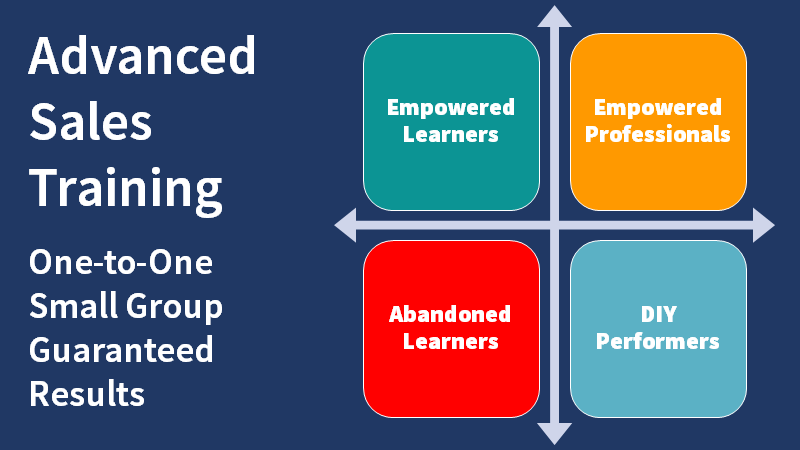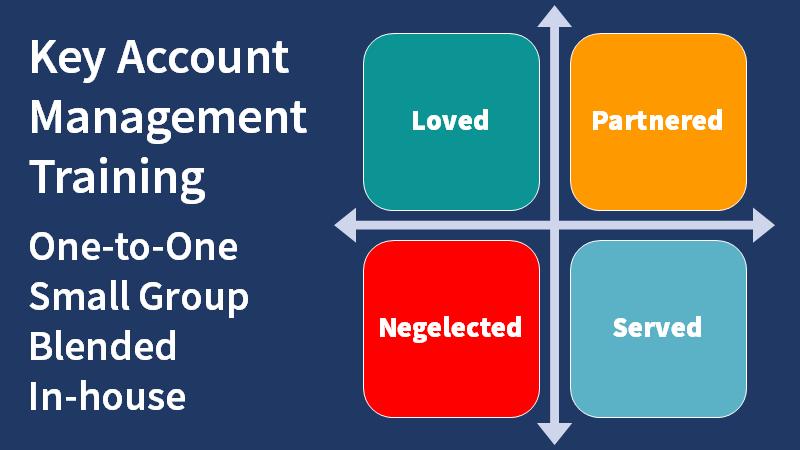
Learn how to use digital marketing techniques to automate email lead generation for less than £100 a month.
Take this digital marketing course and learn how to build your own digital marketing email automation programme for as little as £100 per month. Or use the learning to select the best outside lead generation service for your business.
You could pay any number of companies, thousands to help you implement a digital marketing campaign. Another option is to pay for lead generation. Thousands of companies offer lead generation automation. Some are worth the money. Yet if you don't understand digital marketing techniques first, it will be difficult to recognise and profit from the best solutions.
What sets this digital marketing training course apart from others?
- Based on practical experience and industry research.
- Offers an upsidedown learning option where participants study course materials in advance and then use session time discussing the learning, trying things out, adapting methods for your sales environment, and planning implementation.
- The creation of workplace actions for embedding learning in participant routines and habits.
- The opportunity for one-to-one sessions with the course author.
- Facilitation by the course author.
- The results are guaranteed.
In the old days before the rise of the Internet and easy access to everything, buyers relied on salespeople for information and granted them a chance to begin building a relationship, early in the buying process. Today the means of communication have changed radically yet buyers want the same things - easy access to expertise when needed.
Yet some things are still the same. Digital marketing success is still dependent on knowing the buyers, their situation, and their buying triggers.
This digital marketing course provides a practical, step-by-step, means of setting up a digital marketing campaign for less than £100 per month. That is the easy part. The course also explains how to use digital engagement methods to reclaim a lost opportunity. That of developing trust and understanding, early in a customer's buying process.
Digital Marketing Course Objectives
- Demonstrate the sub £100 per month tools.
- Explain how to get the suspect lead data.
- Provide intent and timing research methods.
- Detail a formula for reliable engagement.
- Create workplace actions for implementation.
- Review some of the digital marketing automation solutions.
Course Content:
Introduction: Goals, objectives, and learning management
Low-Cost Option: The tools, sources, and costs for a sub £100 solution.
Using the tools: What has to be done to make the system work.
Suspects Selection and Research: Those with an immediate need for what you sell.
Turning Suspects into Prospects: How to create an engaging campaign.
Website Continuity: Using website content to support email campaigns.
Social Media Continuity: Aligning website and social media marketing.
Workplace Actions: Planning implementation.
Comparisons: Paid alternatives.
Review and Next Steps: How to transform learning into results.
Who should attend:
Business owners and operators who want to improve their understanding of digital marketing in the UK. Sales and marketing people who need to use digital marketing techniques in their work. Those who need better ways to get buyer attention, establish credibility, and start a dialogue.
Additional Benefits
- Flexible multi-session 'learning by doing' structured training.
- Workplace assignments develop new habits and practices.
- Tools, templates, frameworks, and examples save time and aid learning.
- Common language improves communication and teamwork.
- Promotes adoption of best practice habits and methods.
- Improves job satisfaction and motivation.
- Increases sales results.
Digital Marketing Course Delivery Options
- One to One via four 2-hour or eight 1-hour virtual meetings with the course author.
- £995 - Learn more.
- One to One on a per-session basis.
- £150 - Learn more.
- Via Online Group Training - Five 2-hour or ten 1-hour virtual classroom sessions led by the course author.
- £3995 for up to fifteen people. Learn more.
- Group Training per session for selected content.
- £250 per session. Learn more.
- Traditional Classroom - Delivery over one or more days at a conference venue or the customer's offices. Contact us for fees.
Use this link for more information or to have us call you.
What are email digital marketing best practices for UK B2B campaigns?
Here is a guide for B2B digital marketing best practices using email in the UK:
1. Know Your Audience
Segment your email lists by industry, business size, and location to deliver highly relevant content. Recognise regional business nuances. In the UK there are many regional differences across England, Scotland, Wales, and Northern Ireland. Business challenges and needs often depend on local issues.
2. Comply with GDPR
Under GDPR (General Data Protection Regulation), the rules regarding B2B marketing emails are nuanced. Here's a breakdown:
Opt-In Requirements for B2B Emails
For B2B communications, GDPR allows marketers to send emails to individuals at companies based on legitimate interest rather than requiring explicit opt-in consent. However, this must be balanced with the recipient's rights and expectations. You must ensure the content is relevant to their professional role and organisation, and you should document your reasoning for relying on legitimate interest.
The sender must be clearly identified, and recipients must be given an easy way to opt out of future communications.
PECR (Privacy and Electronic Communications Regulations):
In the UK, GDPR works alongside PECR, which governs email marketing. PECR specifies that you can send marketing emails to corporate subscribers (e.g., business email addresses like name@company.com) without prior consent. Note, sole traders and partnerships are treated like individuals, requiring explicit opt-in consent.
3. Craft Personalised, Professional Subject Lines
Write concise, engaging subject lines that are informative rather than gimmicky. For example, "Driving Efficiency in Your Industry" or "Your Guide to Streamlining Procurement." Avoid overly sales-driven language. A softer, value-focused approach is more effective.
4. Write for a Professional Audience
Keep your tone professional yet approachable, steering clear of aggressive sales tactics or overly casual language. Focus on value: highlight how your products or services solve specific challenges or enhance business outcomes. Use clear, actionable language such as “Download the Report” or “Schedule a Demo” to encourage engagement.
5. Optimise for Timing
Schedule emails during standard working hours. Early mornings (8–10am) and mid-afternoons (2–4pm) often yield better open and click-through rates. Avoid sending emails on Mondays and Fridays, when inboxes are more crowded, and focus on mid-week deployments.
6. Segment, Personalise and Test
Use segmentation and research to personalise emails based on recipient data, industry issues, and past interactions. Tailor subject lines and email body text to reflect the recipient’s specific interests or challenges.
Share insights, whitepapers, or case studies that address pressing business concerns or industry trends.
Use practical examples or testimonials that demonstrate how your solution has benefited similar organisations.
Avoid overloading emails with multiple offers; focus on one key takeaway per email.
Test different formats, tones, and offers to determine what resonates best with your audience. Ensure all emails are professionally formatted, free of typos, and tested for broken links. Regularly update your strategy based on performance data and feedback.
7. Ensure Mobile Optimisation
Use responsive email designs to ensure emails are easily readable on mobile devices.
Keep your subject lines, headers, and CTAs concise, as mobile users often skim content.
8. Use Metrics to Refine Strategy
Track open rates, click-through rates, and conversions to gauge campaign effectiveness.
Conduct A/B testing for subject lines, CTAs, and content to understand what resonates best with your audience.
Monitor unsubscription rates and adjust your content or frequency if necessary.
9. Focus on Call-to-Actions (CTAs)
Position your CTAs prominently and ensure they are clear, specific, and action-oriented. For example, “Download the Report” or “Register for the Webinar.” Limit each email to one or two CTAs to avoid overwhelming recipients.
10. Build Trust with Branding
Use your company’s logo, colours, and tone consistently across all emails.
Include contact information and links to your website and social media profiles to reinforce credibility.
11. Nurture Long-Term Relationships
Implement drip campaigns that guide prospects through the decision-making process with timely, relevant content.
Offer value over time, such as exclusive insights or industry reports, rather than focusing solely on immediate sales.
Email digital marketing remains among the most effective outreach methods when it is used selectively and intelligently. Following these guidelines will help you run successful digital marketing campaigns, For more specific and technical advice, attend our digital marketing course.
Large Numbers
Licensing and train-the-trainer options enable self-delivery. To find out more, call or use the links below. Associate and Affiliate representation is welcomed. To promote or deliver this course, get in touch directly.
Flexible Delivery
If you need to increase your new customer acquisition rate or improve new business results, we can help. Our digital marketing course is designed to provide complete guidance for maximising email marketing effectiveness in the UK. The same or similar principles have proven effective the world over. To learn more about our digital marketing course, telephone +44 (0)1392 851500 We will be pleased to learn about your needs or discuss some options. Alternatively, email custserv@salessense.co.uk or use the contact form here.






















